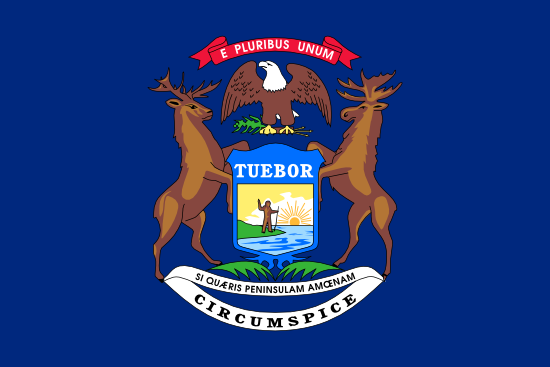
Michigan
- Statehood Year:
- 1837
- Capital:
- Lansing
- Largest Cities:
- Detroit, Grand Rapids, Warren
- Abbreviation:
- MI
Michigan is a state in the Midwest region of the United States, known for the Great Lakes, automotive heritage, and northern forests. It has a population of 10,197,600, making it the 10th most populated state in the country. The capital city is Lansing. Michigan has a manufacturing strength with growing tech and tourism sectors.